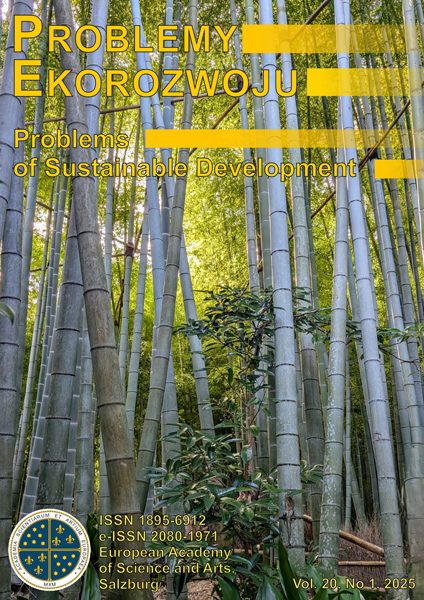Effect of Drilling for Shale Gas on the Quality of Atmospheric Air
Jan Macuda
Faculty of Drilling Oil and Gas, Department of Oil Engineering, AGH University of Science and Technology, al. Mickiewicza 30, 30-059 Kraków (Poland)
Marek Bogacki
Faculty of Mining Surveying and Environmental Engineering, Department of Management and Protection of Environment, AGH University of Science and Technology, al. Mickiewicza 30, 30-059 Kraków (Poland)
Jakub Siemek
Faculty of Drilling Oil and Gas, Department of Oil Engineering, AGH University of Science and Technology, al. Mickiewicza 30, 30-059 Kraków (Poland)
Abstract
Shale gas is an alternative for conventional energy sources. When extracted in compliance with environmental and sustained development rules, it favors the concept of diversification of energy sources, giving spur to the development of economy and technology, and before all, to the energy safety of the country. Poland is among countries, where expectations regarding shale gas are very high. Most of the exploration works for shale gas there are performed with the use of rigs, whose subassemblies are driven by electrical motors powered by mobile generators driven by diesel engines. The number of aggregates and their total power are selected each time on the basis of power balance of particular technological subassemblies and the emergency generation system. Diesel combustion motors used for powering generators are the only source of dust and gaseous emissions to the air. A mobile technological boiler room fed with oil is another source of emissions in the winter period. For the purpose of evaluating impact of rigs on the air environment in the course of prospecting for shale gas an emission model was worked out with five emission points. Four sources were connected with the operation of combustion motors (each 1257 kW) powering generators, and the fifth one (375 kW) feeding technological boiler room. The results of the tests on the environmental impact on motors and boiler room used during shale gas prospecting on the quality of air have been presented in the paper. The tests were performed with the use of mathematical modeling employing real technological data from existing installations.
Keywords:
drilling works, shales, shale gas, air quality, emission of pollutants, dust and gaseous pollutants, contamination of air, mathematical modelingReferences
BOGACKI M., MACUDA J., 2014, The Influence of Shale Rock Fracturing Equipment Operation on Atmospheric Air Quality, in: Archives of Mining Sciences, vol. 59, no 4, p. 897-912.
Google Scholar
MACUDA J., 2010, Environmental aspects of natural gas production from unconventional deposits, in: Geological Review, vol. 58 no 3, p. 266-270 (in Polish).
Google Scholar
MACUDA J., MARCHEL P., 2011, Environmental impact of drilling works on shale gas prospecting in Poland, in: Drilling Oil Gas, vol. 28 no 1-2, p. 263-271 (in Polish).
Google Scholar
ZAWISZA L. et al., 2007, Evaluation of natural hazards while prospecting, recognizing and extracting hydrocarbon deposits. Grant Nr 640/2004/Wn-06/FG-go-tx/D, (in Polish).
Google Scholar
RAHM B., RIHA S., YOXTHEIMER D., 2011, Environmental water and air quality issues associated with shale gas development in the Northeast. Marcellus Center for Outreach & Research, http://www.marcellus.psu.edu/research/pdf/ChangingEnvironment.pdf (05.06.2016).
Google Scholar
MACUDA J., KONIECZYŃSKA M., 2015, Environmental Impact of Exploration from Unconventional Gas Deposits in Poland, in: Ecological Chemistry and Engineering, vol. 22 no 4, p. 703-717.
Google Scholar
CATERPILLAR OIL & GAS, 2013, Power for well servicing, http://catoilandgas.cat.com/cat-3512-well-servicing (01.06.2016).
Google Scholar
U.S. ENVIRONMENTAL PROTECTION AGENCY, 2013, Large Stationary Diesel and All Stationary Dual-fuel Engines, Volume I, Chapter 3: Stationary Internal Combustion Sources, AP 42, 5th Edition, https://www3.epa.gov/ttnchie1/ap42/ch03/final/c03s04.pdf (01.06.2016).
Google Scholar
EUROPEAN ENVIRONMENT AGENCY, 2006, Other mobile sources and machinery. Off road transport. Emission Inventory Guidebook, http://www.eea.europa.eu/publications/EMEPCORINAIR/group08.pdf
Google Scholar
(01.06.2016).
Google Scholar
POLISH COMMITTEE FOR STANDARDIZATION, 2013, Fuel for vehicles. Diesel oils. Requirements and research methods. PN-EN 590:2013-12 (in Polish).
Google Scholar
DIESELNET, 2016, Emission standards. Nonroad diesel engines, https://www.dieselnet.com/standards/us/nonroad.php (01.06.2016).
Google Scholar
MICHAŁOWSKI M., TORA B., ČABLIK V. ČERNOTOVÁ, L., 2012, Wybrane problemy wydobycia gazu łupkowego, in: Rocznik Ochrona Środowiska/Annual Set Environment Protection, Tom 14, p. 866-874.
Google Scholar
MINISTRY OF ENVIRONMENTAL PROTECTION, NATURAL RESOURCES AND FORESTRY, 1996, Emission indices for contaminants introduced to the atmosphere from the combustion of fuels. Information and guideline materials (1/96), Warsaw, (in Polish).
Google Scholar
Regulation of the ENVIRONMENT MINISTER of 24 August 2012 about the level of some substances in air (Dz.U. 2012 poz. 1031.), 2012 (in Polish).
Google Scholar
Regulation of the ENVIRONMENT MINISTER of 26 January 2010 about reference values for some substances in air (Dz.U. 2010 nr 16 poz. 87), 2010 (in Polish).
Google Scholar
Authors
Jan MacudaFaculty of Drilling Oil and Gas, Department of Oil Engineering, AGH University of Science and Technology, al. Mickiewicza 30, 30-059 Kraków Poland
Authors
Marek BogackiFaculty of Mining Surveying and Environmental Engineering, Department of Management and Protection of Environment, AGH University of Science and Technology, al. Mickiewicza 30, 30-059 Kraków Poland
Authors
Jakub SiemekFaculty of Drilling Oil and Gas, Department of Oil Engineering, AGH University of Science and Technology, al. Mickiewicza 30, 30-059 Kraków Poland
Statistics
Abstract views: 31PDF downloads: 7
License

This work is licensed under a Creative Commons Attribution-ShareAlike 4.0 International License.




